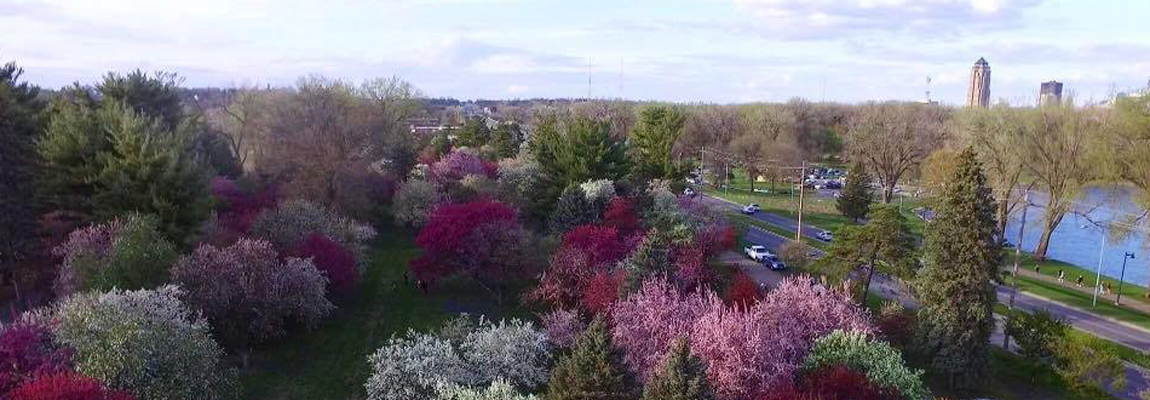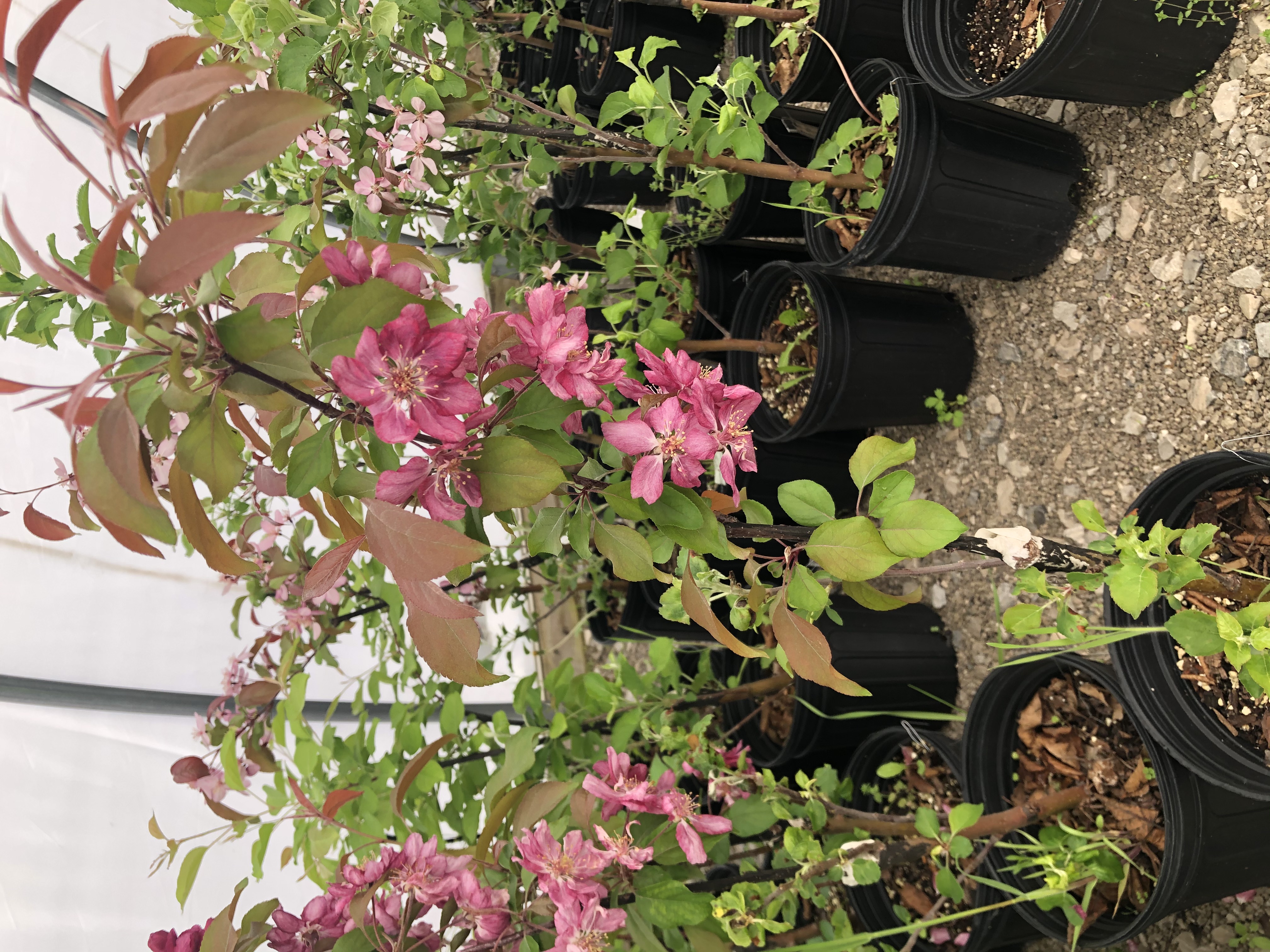Flowering Crabapples Delight in DSM

Within a few weeks, Des Moines Water Works Park will become a sweet-smelling mecca of white and pink as the crabapple trees begin their annual bloom.
Once these trees start bursting with color, this place will be packed with people. It is beautiful — white, pink and fuchsia. All smell good. People walk through and take pictures or sit and have picnics.
The blooming season will be about three weeks from start to finish with full bloom lasting about two weeks. The trees will fruit mid-summer through fall.
Arie Den Boer Arboretum
The inspiration and creation of the crabapple arboretum originated from Arie den Boer, who was charged with beautifying the Water Works Grounds. The arboretum was started in 1928 on 20 acres of farmland. Den Boer traveled around the world studying and collecting Malus species. He had a greenhouse constructed on the then-Municipal Water Plant grounds and grew thousands of seedlings. He created one of the world’s largest collections of flowering crabapple trees. Many of the varieties were developed by den Boer through his work and study at Water Works Park.
 He published a book called “Flowering Crabapples” in 1959 that included many of his own pen and ink sketches of crabapples found in Water Works Park. In 1961, the arboretum was named in honor of him when he retired. Under his management there were 1,000 trees and 250 varieties of crabapples growing in the arboretum. Today there are about 750 crabapple trees.
He published a book called “Flowering Crabapples” in 1959 that included many of his own pen and ink sketches of crabapples found in Water Works Park. In 1961, the arboretum was named in honor of him when he retired. Under his management there were 1,000 trees and 250 varieties of crabapples growing in the arboretum. Today there are about 750 crabapple trees.
Many trees were removed during the construction of the Lauridsen Amphitheater. Others have succumbed to disease and maturity. A crabapple’s lifespan is typically 30 years, and the arboretum is losing a lot of the older varieties.
Grounds employees, several of whom have degrees in horticulture or are Master Gardeners, graft some of the varieties of crabapple in order to start new trees. They have a list of all of den Boer’s original varieties to try to graft and grow as many as possible. Several years of growth, training and development are required in the Water Works Park’s nursery before the new trees have grown large enough to plant on the grounds. Several hundred grafted trees are awaiting enough maturity to be planted.

Crabapples also have been lost through the years to flooding. That’s how the memorial tree program started, where people could make a donation and have a crabapple tree planted in honor of a loved one. Memorial trees can be found throughout the park. Each has a white tag with the name of the variety of crabapple, for whom it is planted, who donated it and the year the tree was planted. The memorial tree program stopped about 10 years ago.
The most recent memorial program consists of one native tree being planted on the park grounds each Arbor Day to honor the memorial contributions from the previous year.
Make time to see the crabapples next month at the arboretum at 2201 George Flagg Pkwy.
Downtown Des Moines (DSM) is a growing, vibrant community that offers the energy, sophistication, housing and attractions of a burgeoning city with a brilliant future. It’s also easy to visit with plentiful and affordable street and ramp parking options.
Named the #1 Best Place to Live in the Midwest and Top Place Where It’s Easiest to Save for Your First Home, Greater Des Moines (DSM) is a city where you can have it all. Learn more about what it’s like to live here.
Jessica Barnett
Jessica Barnett oversees Des Moines Water Works Park and multiple properties owned and operated by Des Moines Water Works. She has started her career as a gardener at the Botanical Center and Water Works Park. She has a degree in horticulture from Iowa State University.